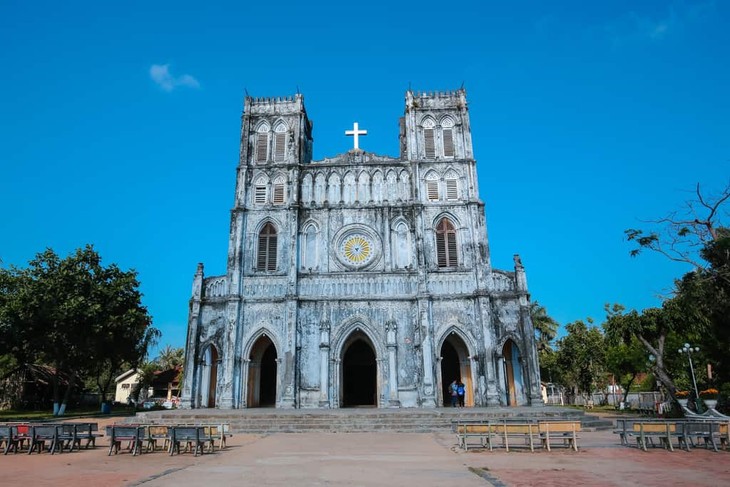(VOVWORLD) - The movie “I see yellow flowers on green grass” catapulted the central coast province of Phú Yên to fame. The province has won praise for its friendly people, delicious food, and the beauty of places like the majestic rock formation called Gành Đá Đĩa and Cape Đại Lãnh with its picturesque lighthouse.
The beach town of Tuy Hòa in the heart of Phú Yên province was built long ago by Cham people. Near the town stands Nhạn tower atop Nhan mountain, which was built to honor the Cham genies. Nearby, there is another mountain called Chóp Chài, which is great for mountain trekking. The bridge that crosses the Đà Rằng river at Tuy Hoa is one of the longest bridges along National Highway 1A.
Bùi Thanh Dung, a tourist from Hanoi, said: “I find Phú Yên very peaceful. Life here goes along at a much slower pace than in busy, noisy Hanoi. The blue sea is really appealing. I’m in love with Phú Yên’s unspoiled landscapes and hospitality, not yet affected by tourism development.”
 Mằng Lăng Catholic church in Phú Yên province (Photo: VNTOURIST/VOV)) Mằng Lăng Catholic church in Phú Yên province (Photo: VNTOURIST/VOV)) |
The Mằng Lăng Catholic church is another prime attraction in Tuy Hòa. The superb 120-year-old Gothic church is one of the oldest churches in Vietnam. The first book written in Vietnam's modern script is kept here.
27 kilometers north of Tuy Hòa is Lao Mái Nhà islet. This little-known islet is an under-the-radar destination for somebody seeking to experience life at its most basic, as there is very little freshwater and no tourism services, accommodations, or electricity. It’s best to visit Lao Mái Nhà islet between March and August, when the weather is nice and the sea is calm.
Đức Dương, a visitor from Thanh Hóa province, told us: “I often take my family to Lao Mái Nhà islet, which is considered the Robinson Crusoe island of Vietnam. When I first arrived here, I knew I had made the right decision. I’m drawn to its pristine beauty. There are very few people here. We bring our own food and cookers, but we also buy fresh seafood from the islanders and cook it on the spot.”
|
 Gành Đá Đĩa (Reef of Plates) is one of the most stunning rock formations in the world Gành Đá Đĩa (Reef of Plates) is one of the most stunning rock formations in the world
(Photo: VOV)
|
40 kilometers north of Tuy Hòa along National Highway 1A is Gành Đá Đĩa, one of the most stunning rock formations in the world. Gành Đá Đĩa looks like a giant honeycomb 50 meters wide and 200 meters long, with prismatic blocks of rock lined up together. The blocks either reach out to the sea or point to the sky, layered like a stack of plates, which explains the formation’s name – Reef of Plates.
A trip to Phú Yên is incomplete without visiting the lighthouse on Cape Đại Lãnh, the easternmost point on Vietnam’s mainland, where sunlight first strikes Vietnam each morning. A 100-step spiral stair leads to the top of the lighthouse and its mesmerizing view.
 A picturesque lighthouse on Đại Lãnh Cape (Photo: VOV) A picturesque lighthouse on Đại Lãnh Cape (Photo: VOV) |
Nguyễn Phương Thảo, Director of S Vietnam Travel, told VOV: “Many foreign tourists book our tour to Gành Đá Đĩa and Cape Đại Lãnh. Phú Yên province’s hospitality and beautiful, tranquil landscapes are drawing more and more foreign visitors.”
Phú Yên province’s culinary specialties include tuna eyes. Tuna eyes, after being cleaned and prepared, are brewed with traditional medicinal herbs and vegetables to create a unique richly-flavored concoction.